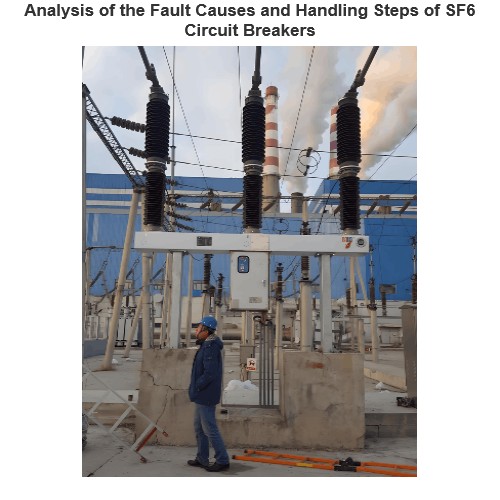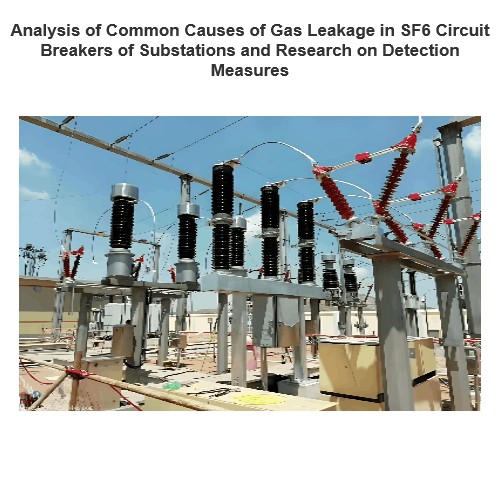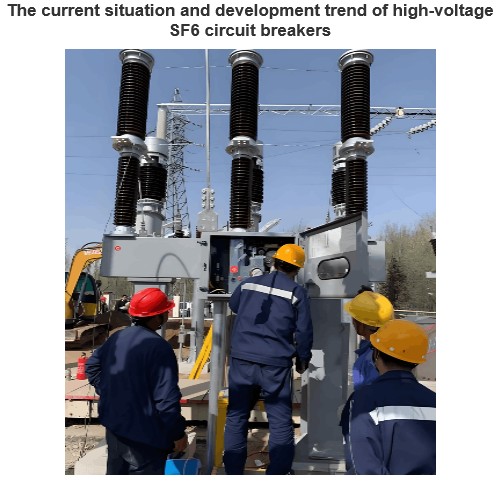Analysis of Common Faults of High-Voltage SF6 Circuit Breakers in Substation Maintenance

Felix Spark
05/08/2025
1 Basic Structure and Working Principle of High - voltage SF₆ Circuit Breakers
High - voltage SF₆ circuit breakers, as indispensable key equipment in the power system, their structure and working principle are the cornerstones ensuring the safe and stable operation of the power grid. It is composed of multiple precision components, including but not limited to insulators, conductive parts, arc - extinguishing chambers, operating mechanisms, and control circuits. Insulators usually adopt high - strength materials to withstand the electric field stress in high - voltage environments; conductive parts are made of metals with high electrical conductivity to ensure the smooth flow of current.
The arc - extinguishing chamber is the core of the circuit breaker. It uses the highly reactive substances generated by the decomposition of SF₆ gas under the action of an arc to quickly cool the arc and accelerate the recovery of insulation strength, thus achieving the rapid and safe interruption of the circuit. SF₆ gas, as a sulfur hexafluoride gas, its excellent insulation and arc - extinguishing properties are the main reasons for its wide application in high - voltage circuit breakers. At the moment when the current passes through zero, SF₆ gas can effectively extinguish the arc and prevent the arc from reigniting, ensuring that the circuit breaker can reliably complete the breaking task. In addition, SF₆ gas has excellent sealing performance, which can effectively isolate the intrusion of external moisture and impurities. This is of great significance for maintaining the cleanliness and dryness of the internal environment of the circuit breaker, thus ensuring that the equipment can operate stably for a long time.
In terms of design, high - voltage SF₆ circuit breakers are also equipped with advanced operating mechanisms and control circuits. These components work in coordination to ensure that the circuit breaker can respond to various complex operation requirements of the power grid. The operating mechanism is responsible for executing the opening and closing actions of the circuit breaker, while the control circuit is responsible for monitoring and adjusting the working state of the circuit breaker to ensure the accuracy and reliability of its actions.
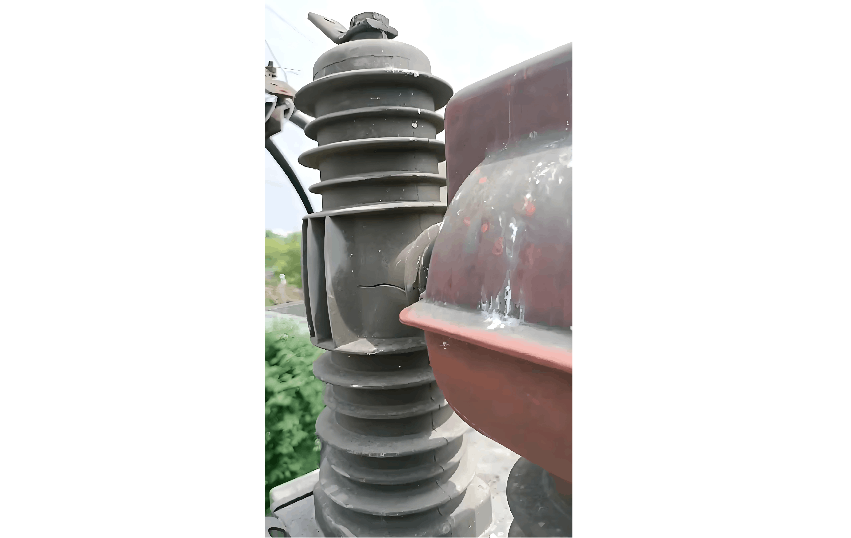
2 Common Faults of High - voltage SF₆ Circuit Breakers in Substation Maintenance
2.1 SF₆ Gas Leakage
2.1 SF₆ Gas Leakage
SF₆ gas leakage is one of the most common faults in SF₆ circuit breakers. Such leakage will lead to a decrease in the insulation performance inside the circuit breaker, thus affecting its normal operation. The reasons for leakage may include aging and damage of seals, or poor sealing during installation. Gas leakage not only reduces the performance of the circuit breaker but may also cause harm to the environment, as SF₆ is a greenhouse gas that has a significant impact on global warming.
2.2 Operating Mechanism Failure
The operating mechanism is a key part of the circuit breaker responsible for opening and closing operations. If the operating mechanism fails, it may cause the circuit breaker to malfunction. Such failures may include insufficient spring energy storage, hydraulic oil leakage, compressed air leakage in the pneumatic system, and other problems. The failure of the operating mechanism not only affects the performance of the circuit breaker but may also endanger the safe and stable operation of the entire power system.
2.3 Contact Wear
When the circuit breaker is frequently operated or runs for a long time, the contacts (conductive parts) may wear, which will affect the electrical conductivity and opening - closing ability of the circuit breaker. When the wear is severe, it may lead to problems such as contact heating and burning, and may even cause the failure of the circuit breaker, affecting the stable power supply of the power system.
2.4 Auxiliary Switch and Protection Circuit Failure
The auxiliary switch is used to monitor the status of the circuit breaker, and the protection circuit is used to protect the circuit breaker from damage caused by faults. If these components fail, it may cause the circuit breaker to fail to correctly respond to the protection needs of the system, thus affecting the safety of the entire power system.
2.5 Over - voltage Problem
Over - voltage may occur when the circuit breaker performs opening operations, and this situation may cause damage to surrounding electrical equipment. To mitigate this impact, over - voltage protection devices such as arresters are usually installed. Over - voltage protection measures are crucial for ensuring the stable operation of the power system and the safety of equipment.
2.6 Aging or Damage of Mechanical Components
Under long - term operation or in harsh environments, the mechanical components of the circuit breaker may age, deform, etc., which will affect their mechanical performance. The damage of mechanical components may cause the circuit breaker to be unable to operate normally, and may even lead to safety accidents.

3 Maintenance and Repair Measures for Common Faults of High - voltage SF₆ Circuit Breakers in Substation Maintenance
3.1 Maintenance and Repair for SF₆ Gas Leakage
3.1 Maintenance and Repair for SF₆ Gas Leakage
To ensure the safe operation of SF₆ gas equipment, it is recommended to use ultrasonic leak detectors or halogen leak detectors. Both are effective tools for detecting SF₆ gas leakage. Regular inspections can promptly detect potential leakage points, and corresponding measures can be taken to prevent gas leakage from causing damage to the environment and equipment.
In daily maintenance, the status of seals should be closely monitored. Once signs of aging or damage of seals are found, they must be replaced immediately. During the replacement of seals, the sealing process requirements provided by the manufacturer should be strictly followed to ensure that the new seals can be correctly installed and play their proper sealing effect, thus guaranteeing the sealing performance and operation safety of the equipment.
During the monitoring process, if a decrease in the pressure of SF₆ gas is detected, which may be a sign of gas leakage, measures should be taken immediately to replenish the gas to ensure that the equipment can maintain a normal working pressure range. When replenishing the gas, high - purity SF₆ gas that meets the standards should be used to avoid affecting the insulation performance of the equipment due to insufficient gas purity. At the same time, during the gas - filling process, the introduction of impurities should be strictly controlled to ensure the purity of the gas, thereby guaranteeing the stable operation of the equipment and extending its service life.
3.2 Maintenance and Repair for Operating Mechanism Failure
To ensure the normal operation of the operating mechanism, the spring energy storage situation should be regularly checked to ensure that the spring has sufficient energy reserves. For equipment with hydraulic operating mechanisms, the oil level of the hydraulic oil must be carefully checked to see if it is at an appropriate level, and the oil quality should be evaluated to ensure that it meets the standard requirements. Once the oil level is found to be insufficient or the oil quality deteriorates, measures should be taken immediately to replenish or replace the hydraulic oil to maintain the normal operation of the system.
For equipment with pneumatic operating mechanisms, regular inspections are essential. This includes monitoring the pressure of compressed air to ensure it is within a safe and effective range, and checking the integrity of sealing components to prevent air leakage, which may lead to a decrease in equipment performance or operational failure. Through these preventive measures, the stability and reliability of the pneumatic system can be ensured.
To maintain the efficient operation of the operating mechanism, regular cleaning and lubrication of mechanical components are of great importance. Cleaning can remove accumulated dirt and impurities to prevent them from causing wear or blockage to the equipment; appropriate lubrication can reduce friction between components and reduce the risk of operational failures.
3.3 Maintenance and Repair for Contact Wear
To ensure the safe and stable operation of electrical equipment, the wear condition of contacts must be carefully checked during each maintenance. During the inspection, precise measuring tools should be used to measure the thickness of the contacts to ensure it is within the specified allowable range. Once the wear amount of the contacts is found to exceed the specified allowable range, to prevent possible failures and hazards, the worn contacts must be replaced immediately.
For contacts with only slight wear, the surface flatness can be restored through professional grinding methods. However, during the grinding operation, the depth and force of grinding must be strictly controlled to avoid excessive material loss of the contacts due to over - grinding, which may affect the normal performance and service life of the contacts. Therefore, the grinding work should be carried out by experienced technicians to ensure the accuracy and safety of the operation.
To effectively extend the service life of contacts, it is advisable to optimize the operation frequency of the circuit breaker to reduce unnecessary frequent operations. Frequent operations not only accelerate the wear of contacts but may also cause premature aging of other components of electrical equipment. Therefore, reasonably planning and adjusting the operation frequency and avoiding unnecessary operations are important measures to improve the service life of contacts and ensure the stable operation of equipment.
3.4 Maintenance and Repair for Auxiliary Switch and Protection Circuit Failure
①Inspection of Auxiliary Switches
To ensure the normal operation and safety of equipment, regular and detailed inspections of auxiliary switches are of great importance. This process includes a thorough inspection of the contact condition of the switch to ensure good contact and no looseness or corrosion. If problems such as poor contact or wear are found during the inspection, measures should be taken immediately to adjust or replace the switch to avoid possible equipment failures or safety accidents.
To ensure the normal operation and safety of equipment, regular and detailed inspections of auxiliary switches are of great importance. This process includes a thorough inspection of the contact condition of the switch to ensure good contact and no looseness or corrosion. If problems such as poor contact or wear are found during the inspection, measures should be taken immediately to adjust or replace the switch to avoid possible equipment failures or safety accidents.
②Testing of Protection Circuits
The protection circuit is a key component to ensure the safe operation of electrical equipment. Therefore, regular and comprehensive testing of the protection circuit is essential. This test aims to ensure that the protection circuit operates reliably and in a timely manner, and can quickly cut off the power supply in case of abnormal situations to prevent equipment damage or personal injury. If the test results show that there are problems with the protection circuit, such as calibration deviation or component damage, calibration should be carried out immediately or the damaged components should be replaced to ensure the normal function of the circuit.
The protection circuit is a key component to ensure the safe operation of electrical equipment. Therefore, regular and comprehensive testing of the protection circuit is essential. This test aims to ensure that the protection circuit operates reliably and in a timely manner, and can quickly cut off the power supply in case of abnormal situations to prevent equipment damage or personal injury. If the test results show that there are problems with the protection circuit, such as calibration deviation or component damage, calibration should be carried out immediately or the damaged components should be replaced to ensure the normal function of the circuit.
3.5 Maintenance and Repair for Over - voltage Problems
To ensure the safe and stable operation of the power system, it is recommended to install arresters near the circuit breaker. This can effectively prevent damage to the equipment caused by operating over - voltage due to lightning strikes or other reasons, thereby extending the service life of the equipment and ensuring its normal operation.
To further improve the operation efficiency and safety of the power system, it is advisable to optimize the operation mode of the circuit breaker. In particular, it should be noted that when the system voltage fluctuates greatly or the system load changes sharply, the operation of the circuit breaker should be avoided to prevent equipment failures or safety accidents caused by improper operation.
3.6 Maintenance and Repair for Aging or Damage of Mechanical Components
Comprehensive inspections should be carried out on the mechanical components of the circuit breaker, including but not limited to transmission shafts, connecting rods, bearings, etc. During the inspection, special attention should be paid to the wear degree, cracks, deformation, and other phenomena of the components. Once signs of aging or damage are found, replacement or repair should be carried out immediately to prevent the further expansion of the failure.
For key components such as transmission shafts and connecting rods, regular lubrication treatment should be carried out to reduce wear and extend the service life. At the same time, for vulnerable parts such as bearings, their operating status should be regularly checked to ensure smooth rotation and no abnormal noise or heating. When necessary, new bearings should be replaced to ensure the normal operation of mechanical components.
For the mechanical components of the circuit breaker, load tests should also be regularly carried out to simulate operations under actual working conditions to test their performance and reliability. Through these tests, potential problems can be promptly detected, and corresponding maintenance measures can be taken to ensure the stability and safety of the circuit breaker under various working conditions.
For all maintenance and repair work, detailed records should be made, including information such as the model of the replaced component, maintenance time, and operating personnel. These records have important reference value for subsequent maintenance work and fault analysis, helping to improve maintenance efficiency and the operational reliability of the circuit breaker.
3.7 Other Maintenance Measures
To ensure the stable operation of the power system, the operating temperature of the circuit breaker should be regularly checked to prevent equipment damage caused by overheating. This step is crucial for ensuring the normal operation of the equipment and extending its service life.
To maintain the normal working state of the circuit breaker, regular cleaning of its casing is essential. By removing dust accumulation on the surface and preventing corrosion and other problems, the adverse effects of these factors on the equipment performance can be effectively avoided, ensuring the safety and reliability of the power system.
With the continuous progress of technology, timely technical transformation of the circuit breaker is an effective means to improve its performance and reliability. By analyzing the operating conditions and historical data of the equipment, necessary technical upgrades can be carried out in a targeted manner to ensure that the circuit breaker can meet the requirements of modern power systems.
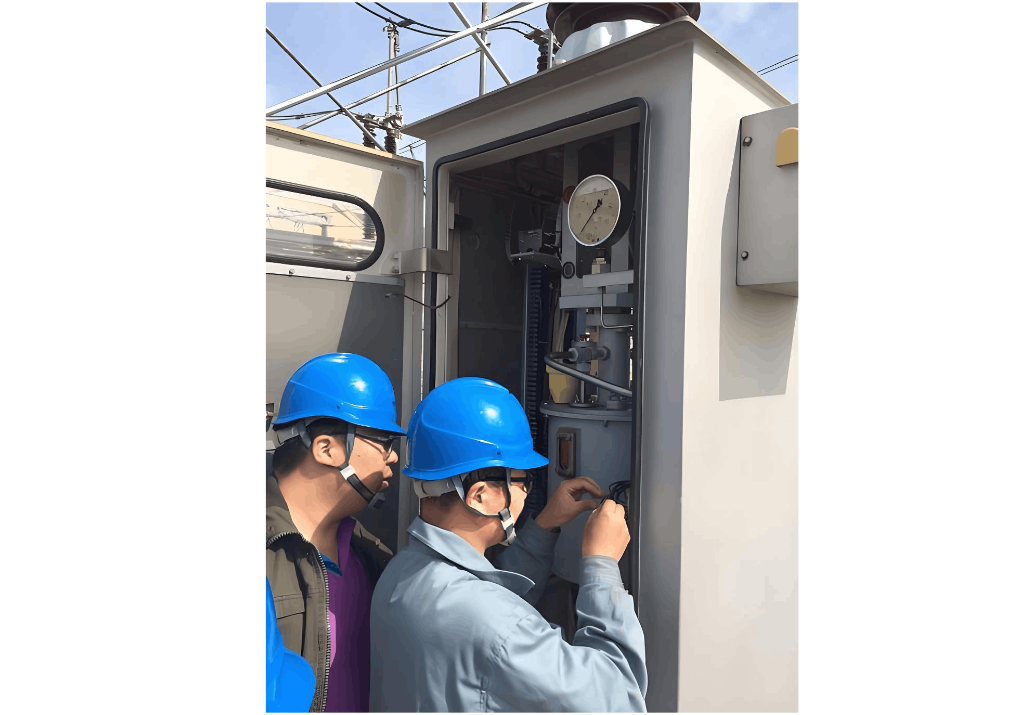
4 Conclusion
In the substation maintenance work of the power system, the maintenance and troubleshooting of high - voltage SF₆ circuit breakers are of great significance. Through regular inspections and appropriate maintenance measures, the occurrence of faults can be effectively prevented, ensuring the safe and stable operation of the power system. In this process, technicians should strictly follow the operation procedures, use advanced detection equipment and technologies, and continuously improve the quality and efficiency of maintenance to provide a solid guarantee for the reliable operation of the power system.

Hey there! I'm an electrical engineer specializing in Failure and Maintenance. I've dedicated my career to ensuring the seamless operation of electrical systems. I excel at diagnosing complex electrical failures, from malfunctioning industrial motors to glitchy power distribution networks. Using state - of - the - art diagnostic tools and my in - depth knowledge, I pinpoint issues quickly. On this platform, I'm eager to share my insights, exchange ideas, and collaborate with fellow experts. Let's work together to enhance the reliability of electrical setups.
